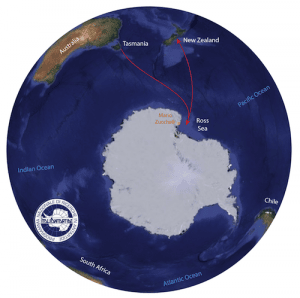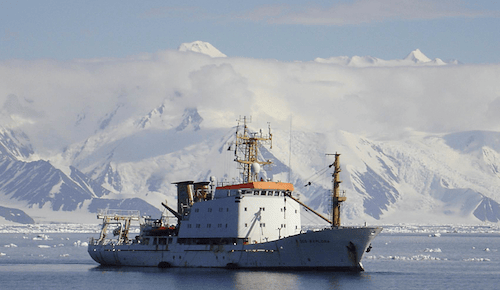What happened in the past at the South Pole? How did the Antarctic ice sheet respond to particularly warm periods? How’s the situation in Antarctica when CO2 in the atmosphere was higher than today?
Those are some of the questions that the 32nd Italian Antarctic Campaign funded by the National Research Program in Antarctica (PNRA – Programma Nazionale di Ricerche in Antartide) will try to solve even with the involvement of the CMCC Foundation, thanks to the work of the researcher Florence Colleoni.
The research activities will be carried out at two land-based stations, the Italian Base “Mario Zucchelli”and the French-Italian Station “Concordia” and by employing two italian research vessels, Italica and OGS Explora.
The CMCC Foundation in collaboration with the OGS – Istituto Nazionale di Oceanografia e di Geofisica Sperimentale (Trieste, Italy) is involved in two research projects funded by the PNRA. The projects are coordinated by the OGS researchers L. De Santis and C. Sauli and aim at prospecting ocean bathymetry by means of multi-channels seismic technique and other sampling methodologies. The marine seismic survey will be carried out in the eastern and western Ross Sea. All the operations will be conducted on board of the research vessel OGS Explora while involving a wide range of professionals for the management of electronic and mechanical instruments and the logistics and maintenance of naval platform (among them, 22 researchers).

Fig.1: The route and the area of the 32nd Italian Antarctic Campaign in the Ross Sea. Credits: Florence Colleoni
The mission of the campaign is to understand how the Antarctic ice sheet has responded to climate conditions warmer than during the pre-industrial period when atmospheric CO2 concentration was slightly higher than today (about 500 ppm). In particular, the seismic profiles carried out by the OGS Explora research team might provide the groundling line of the Antarctic ice sheet during past warmer climate periods, in an area where paleodata show that the ice sheet has frequently collapsed.
Samples of marine water will be also collected in the Ross Sea.
Together, measurements and data will allow researchers to estimate the amplitude of the ongoing ice sheet melting in the area.
“These seismic data are of critical importance for climate and ice sheet modelers”, explains Florence Colleoni, researcher at the CMCC Foundation and ready for departure for Antartica. “Unlike Greenland, the Antarctic ice sheet developed under climate conditions much warmer than today.
The collected data will help us to understand climate and ice sheet dynamics and evolution.
The simulation of past climate conditions and the response of the Antarctic ice sheet in agreement with those data is a challenge for the international polar community that involves all the climate sciences and need a strong collaboration and synergy of the international research community. The collaboration between the CMCC Foundation and OGS is a good example of cooperation between modelers, geologists and geophysicists. I am sure that this campaign will foster the ongoing and future research partnerships at both national and international level.”
The interest in paleoclimate research has increased in the last years. “In particular”, continues Dr. Colleoni, “when scientists understood that paleoclimate studies allow us to calibrate ice sheet models and better understand the climatic mechanisms acting over past climate transitions that caused the partial dismantling of Greenland and Antarctica.”
Dr. Colleoni (CMCC) will be on board of the vessel OGS Explora for the expedition. “Seeing with my own eyes the subject of my research is an extraordinary opportunity. When I was informed that I would be part of the crew, I was enthusiastic. When I was a PhD student at the Laboratoire de Glaciologie et Géophysique de l’Environnement (LGGE, Grenoble, France), I saw many of my colleagues leaving for Antarctica and I have always dreamt that, one day, I will leave to explore the poles.”
The expedition will leave from the port of Hobart in Tasmania on January 15th and will navigate towards the Ross Sea. The return is planned at the beginning of March, in Lyttelton (Christchurch, New Zealand).
Follow on Facebook (ItaliAntartide – 32.a Spedizione) and twitter (@ItaliAntartide) the 32nd Italian Antarctic Campaign.
Photo credits: OGS – Istituto Nazionale di Oceanografia e di Geofisica Sperimentale (Trieste, Italy).




